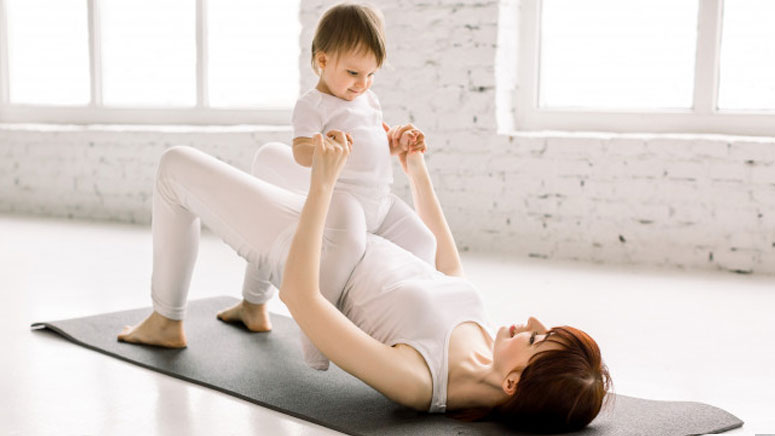
Mentionably, the initial three months after childbirth are crucial period for the nursing mother. These months must be devoted to recovery. The most important things for the mother at this point of time are relaxation, sleep and rest rather than exercise.
As the body regains its normal shape in the fourth month (after delivery), the mother can start doing selected easy yogic exercises like Pranayama (controlled breathing exercises) and asanas.
However, avoid fatigue and strain.
You can increase the time and intensity of the yogic exercises up to the seventh month after childbirth.
However, it is not at all necessary for the recovering mother to do all the following exercises. Perform those short-listed asanas slowly and in a relaxed manner. Always condition your mind to reshape the body during the exercise schedule.
Remember that the maximum benefits can be gained from the yogic asanas only when one does them slowly.
Regular practice of the short-listed asanas will definitely help in bringing back the body to its original shape and size after delivery. The asanas that can be performed three months after childbirth are Akarshana Dhanurasana, Ardha Matsyendrasana, Ushtrasana, Supta Vajrasana, Vajrasana, Dhanurasana, Ardha Shalabhasana, and Bhujangasana.
Position 8 of Surya Namaskar and Sarvangasana are ideal postures during the postnatal recovery stage. They counteract the gravity effect on the internal organs during pregnancy. They also bring back these organs to their original positions. In the postnatal recovery stage, regular practise of Sarvangasana corrects enlargement of the ovary and the uterus.
The pelvic floor exercises will stimulate blood circulation to the perineum area which may have undergone tear or cut during childbirth. The ideal pelvic floor exercises during the postnatal recovery stage are Matsyasana, Moola Bandha, Yoga Mudra and Bhadrasana. These postures retone the muscles and contract the pelvic floor.
One of the important asanas during the postnatal recovery stage is Viparita Karani. Viparita Karani brings back the displaced internal organs to their original positions. Besides, this asana also strengthens the abdomen.
Do this exercise by moving your legs in the cycling action. Slowly lift up your legs and move them first in the clockwise and then in the anti-clockwise directions. Perform the actions as many times as you can without straining yourselves.
Take rest in Savasana for some time after each asana.
Savasana cures the sacroiliac joints which generally become rather tender and cause pain after delivery. These joints are required to be separated during the pelvic separation process during childbirth.
Follow up Viparita Karani with the forward bend postures like Paschimotanasana and Janusirasana. They strengthen internal organs, uterus and the abdomen.
Janusirasana restores the womb to its normal position after prolapse or childbirth.
Other asanas that help to restore the uterus to its original position are Sasankasana and Utkatasana. These postures further set aright minor prolapses of the pelvic viscera. They also contract the over-relaxed muscles of the vaginal urinary tract.
To correct retroversion (tipping forward) of the uterus and to also strengthen the transverse back muscles you can perform Janu Vakshasana. This asana makes the body stoop forward and arches the transverse back muscles that keep together the over-relaxed pelvic bones after delivery.
The over-relaxed abdominal muscles are tightened when the mother performs Ardha Halasana, Nauli and Uddiyana.
Parvatasana prevents uterine prolapse. It is easier to do. This asana flattens the abdomen by firmly pushing backward and upward the abdominal organs against the spine.
Aswini Mudra keeps the perineum supple. It also forms up the stretched muscles.
Other asanas that firm up the abdomen are Chakrasana (Supine), Pavana Muktasana, and Naukasana (Supine). But, these are a bit difficult exercises; so perform them with caution.
